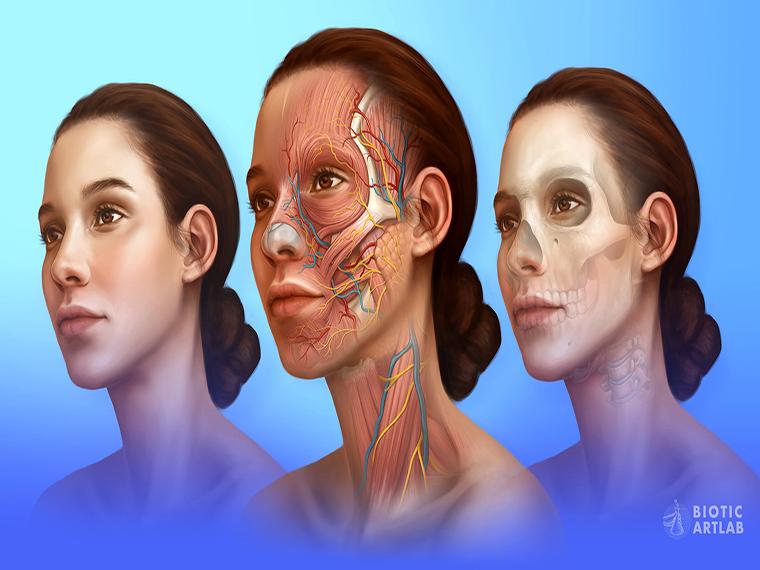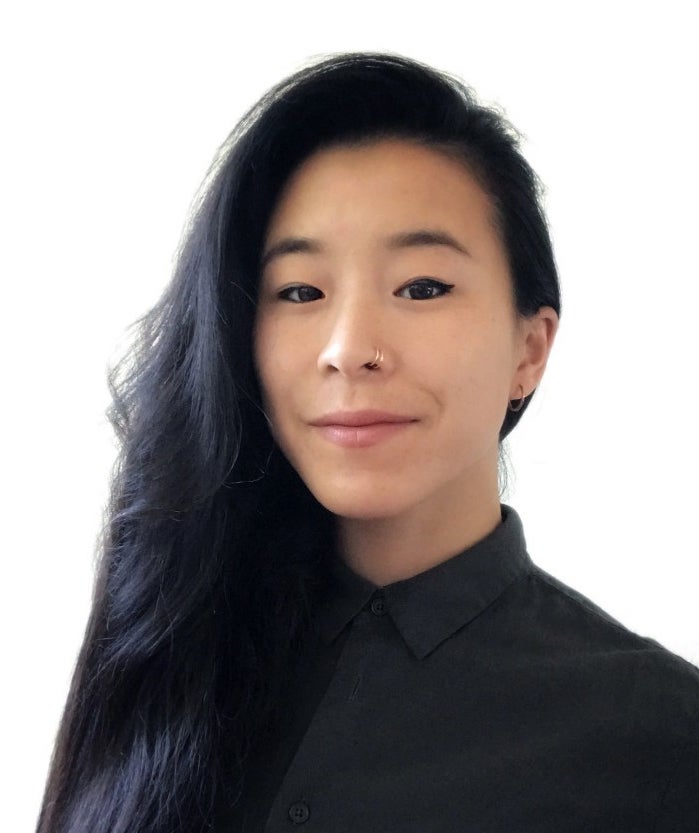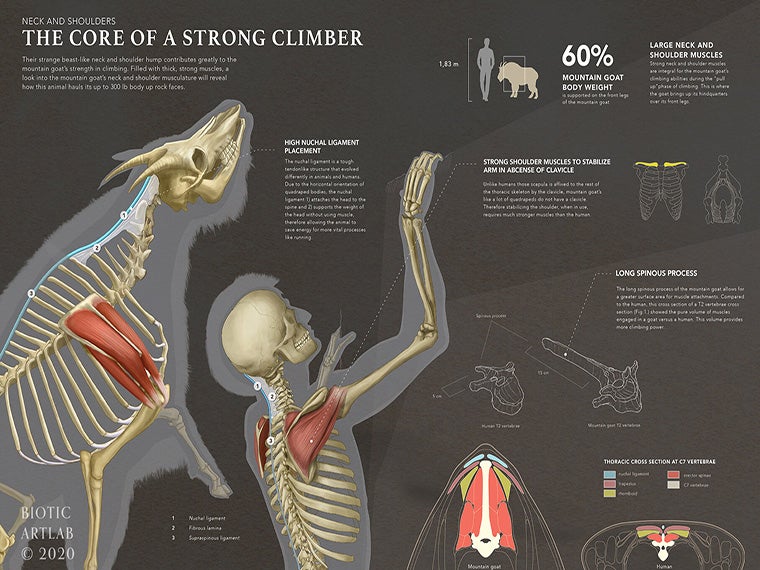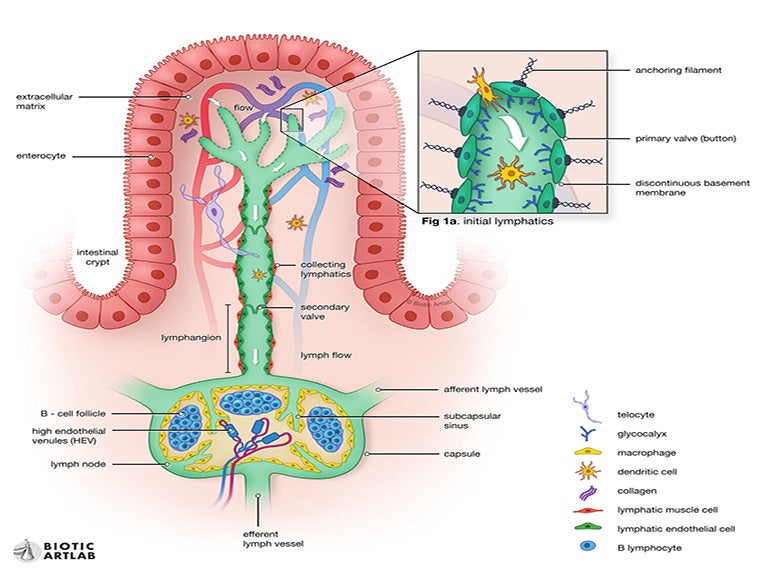From Pre-Med to Scientific Illustrator: Tiffany Fung '12
Fung blended her love of science and art into a career as a medical and scientific illustrator.
February 23, 2021
Jaimie Yue '22

A medical illustration by Tiffany Fung '12.
Photo credit: Tiffany Fung/Biotic Artlab
Tiffany Fung '12 is masterful at combining her diverse interests in new and interesting ways. Most notably, she is able to blend her love of science and art into her current career as a medical and scientific illustrator in Maastricht, Netherlands.
Examples of Fung’s ability to spin two disparate topics into one includes turning her passion for rock climbing into a senior thesis on mountain goat anatomy, and her dog-loving nature into pages of Borzoi drawings.
Most recently, Fung co-founded Biotic Artlab, a medical and scientific illustration studio, with classmates Ezra van Hattem and Margot Ceelen. All three received their master’s in scientific illustration at Zuyd University of Applied Sciences in the Netherlands.
“We basically are illustrators-slash-designers who operate within the healthcare, medical, and pharmaceutical fields to provide visual content and educational material for those industries,” says Fung.

Medical illustration deals with the study of both life sciences and visual communication, explains Fung. It is an incredibly versatile and ubiquitous field, spanning textbook illustrations, patient education materials for doctors, illustrated medical research, and even 3D modeling and animation.
“Scientific and medical illustration are intertwined,” Fung explains. “Scientific illustration encompasses biological and natural sciences. Medical illustration is pretty specific to human medicine.”
Fung began her Oberlin education on the pre-med track. However, during one winter term project in which she shadowed an ER physician in New York, the 12-hour shifts proved to be the opposite of what Fung was looking for.
“I realized that while I was interested in medicine, the practical life side of it was not something that I could see myself ever really accepting,” she says.
Meanwhile, the art history program at Oberlin gave Fung “a critical eye for anything visual.”
“Honestly, when I switched to art history I thought that I was done with science. I realized that I wanted to do something more creative in the sense of myself creating something from start to finish,” she added.

That changed after she graduated from Oberlin and learned that she could combine her interests within medical and scientific illustration. Still, the path to that goal was challenging.
Fung discovered that there were only three master’s programs in medical illustration in the United States, and they demanded rigorous science courses. Fung took several courses at the University of California-Berkeley, but later decided to find a program in Europe after reflecting on her study abroad experience in Paris during her third year at Oberlin.
“I knew that I wanted to live abroad again,” Fung explained. “I knew that after working for five years that I wanted to go back there, and I knew that applying for a job and getting sponsored is much, much more challenging than becoming a student.”
Fung began her master’s program at Zuyd University in 2018. While there, she was trained in traditional art with an emphasis on creative, independent work. Fung was even able to center her senior thesis around mountain goat anatomy as a way to explore her passion for rock climbing from a biological and artistic perspective.
“I wanted to do something related to climbing, and I created this idea around mountain goat anatomy and human anatomy. There are zero people in the world doing research on that, so I was able to find advisors and foray into what it's like to find people who are interested in working with you, which is really valuable for starting my own company,” Fung says.

“I think it actually mimicked what the professional environment would be like, where no one’s holding your hand and you have to figure out how to get from A to B on your own,” Fung adds about her master’s program.
After graduating with her master’s in scientific illustration in 2020, Fung decided to stay in the Netherlands. In August 2020, she co-founded and launched Biotic Artlab with her classmates as a more collaborative approach to freelance work.
“My two friends Margot [Ceelen] and Ezra [van Hattem] decided, we're going to end up doing freelance anyway, [so] why not work together?” Fung said. We have different strengths, and together our work is so much better than if we just sit alone in our apartments, competing against each other for work. There are not a lot of small collaborative medical illustration studios in Europe and we wanted to fill a niche.”
Hattem specializes in natural science illustration and Celeen in surgical illustration. The ongoing COVID-19 pandemic has disrupted their plans to work with zoos and natural history museums, but there is now a greater demand from physicians, hospitals, and research institutes. Their projects involve designing medical apps, creating visualizations for surgical procedures, and developing branding and marketing for commercial medical products.
“We're primarily working with physicians from different fields such as orthopedic surgery, cardiology, dermatology, and oncology, and they are from across Europe and the U.S.,” Fung said. “We're also working with wilderness medics in Oregon, creating educational material for them. So, it comes in many shapes and forms.”
Their upcoming projects are mostly under wraps because of medical confidentiality, but Fung was able to share that Biotic Artlab is looking at creating more 3D projects and educational material related to COVID-19.
For students interested in a similar career path, Fung urges them to research programs early. The Association of Medical Illustrators and Association Européenne des Illustrateurs Medicaux et Scientifiques and provide information about North American and European programs, respectively. She also advises that medical and scientific illustrators need to be self-motivated.
“You're adding more work out there into this massive pool of images, and it's very easy to create work that does not add new perspectives to the field,” Fung said. “It's up to you being self-motivated and having integrity to better the medical illustration field instead of just generating content.
“Medical illustration is not just pictures, and that's the cool part about it. You can do a lot with it. So for anyone who's interested in design or art or medicine, I would definitely recommend taking a peek into this field,” Fung added.
To learn more about Biotic Artlab, visit the website or view the Instagram page at @biotic.artlab.
You may also like…
Josh Nolan Named Vice President, General Counsel, and Secretary at Oberlin
Distinguished attorney brings extensive experience in higher education law.
Learning by Teaching: Oberlin Students Share Global Music with Young Learners
College and Conservatory students in PACE 103 prepare local children for an immersive community concert at Oberlin.
Nuiko Wadden ’02 Joins Oberlin Conservatory Faculty as Assistant Professor of Harp
The versatile musician brings extensive opera, orchestral, and contemporary music experience to her role


